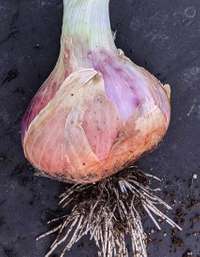
Figure 16. 'Awahia' onion bulb at harvest. Source: Holly Sobetski
The common onion (Allium cepa L.) is an important vegetable used in food preparation worldwide. The main edible portion of the plant is the bulb, which grows in the soil and is formed by fleshy scales which are modified leaves (Wu et al., 2016). ECHO’s Global Seed Bank offers a variety called ‘Awahia’ that is adapted to warm climates and forms pink/red bulbs that have good storage qualities (Figure 16).
Onion varieties are categorized by the daylength required for bulb formation. Short- and long-day varieties need 12-13 and 14.5 hours of daylight, respectively, to form bulbs (Hamasaki et al., 1999). Since daylength at the equator is 12 hours, you need a short-day variety if you want to grow onions that produce bulbs in the tropics. ‘Awahia’ is a short-day variety developed by College of Tropical Agriculture and Human Resources (CATAHR) in Hawaii (Hamasaki et al., 1999).
Onion varieties vary in flavor, with some described as having a mild taste and others as having a strong, spicy flavor. The latter are described as pungent varieties. Though many short-day onion varieties are mild-fleshed, ‘Awahia’ is described as pungent. Pungent varieties are typically cooked while mild varieties are either cooked or eaten raw.
The length of time onion bulbs can be stored varies with variety. ‘Awahia’ has good preservation qualities. It should be possible to store the bulbs for two to six months (Ko et al., 2002). To maximize storage life, Tripathi and Lawande (2019) mention the following:
- Harvest when 50% or more of the plants’ leaves have dried. 3
- Allow harvested onions to cure before storing them. Curing is a process that dries the neck, roots, and outer skin while retaining water content of the bulb. It minimizes rotting and water loss of stored onions. If harvest time coincides with a season of dry weather, curing can be done in the field by harvesting the bulbs with the leaves attached and then placing bulbs in one row under leaves of plants in the next row; this prevents sunburn that could result from exposure to direct sun. If rain is expected, cure onions in a dry, well-ventilated structure (e.g., a curing shed). Allow onions to cure until the outer skin is dry and papery, which will take at least 5 to 10 days depending on temperature and air movement (these conditions are influenced by curing method). To minimize injury to the bulbs, avoid handling them while they are curing.
- When trimming leaves after curing, leave a few centimeters of the neck attached to the top of the bulbs to reduce infection by disease organisms.
- Store in a cool place with 65 to 70% humidity.4
Onions produce seed after two growing seasons. Plants form bulbs in the first season and flowers in the second (Rashid and Singh, 2000). Onion plants require low temperatures (10-15 °C) to flower. Thus, growing onions for seed multiplication is challenging in the tropics but can be done at high-altitude locations that meet temperature requirements. The publication by Rashid and Singh (2000) covers details for a bulb-to-seed method of producing onion seed; it involves storing bulbs at 12°C to meet the low temperature requirement.
Development workers may request a free trial packet of ‘Awahia’ seed. See ECHOcommunity.org for information on obtaining seed from the ECHO Global Seed Bank.
Cite as:
Motis, T. 2022. Allium cepa ‘Awahia’: A Short-Day Onion Option. ECHO Development Notes no. 156.
References
Hamasaki, R., H. Valenzuela, and R. Shimabuku. 1999. Bulb onion production in Hawaii. College of Tropical Agriculture and Human Resources.
Ko, S., W. Chang, J. Wang, S. Cherng, and S. Shanmugasundaram. 2002. Storage variability among short-day onion cultivars under high temperature and high relative humidity, and its relationship with disease incidence and bulb characteristics. Journal of American Society for Horticultural Science 127(5):848-854.
Rashid, M.A. and D.P. Singh. 2000. A manual on vegetable seed production in Bangladesh. AVRDC-USAID-Bangladesh Project, Horticulture Research Centre, Bangladesh Agricultural Research Institute.
Tripathi, P. and K.E. Lawande. 2019. Onion storage in tropical region – a review. Current horticulture. 7(2):15-27.
Wu, S., F. Ning, X. Wu, and W. Wang. 2016. Proteomic characterization of differential abundant proteins accumulated between lower and upper epidermises of fleshy scales in onion (Allium cepa L.) Physical Review 47:777-780.